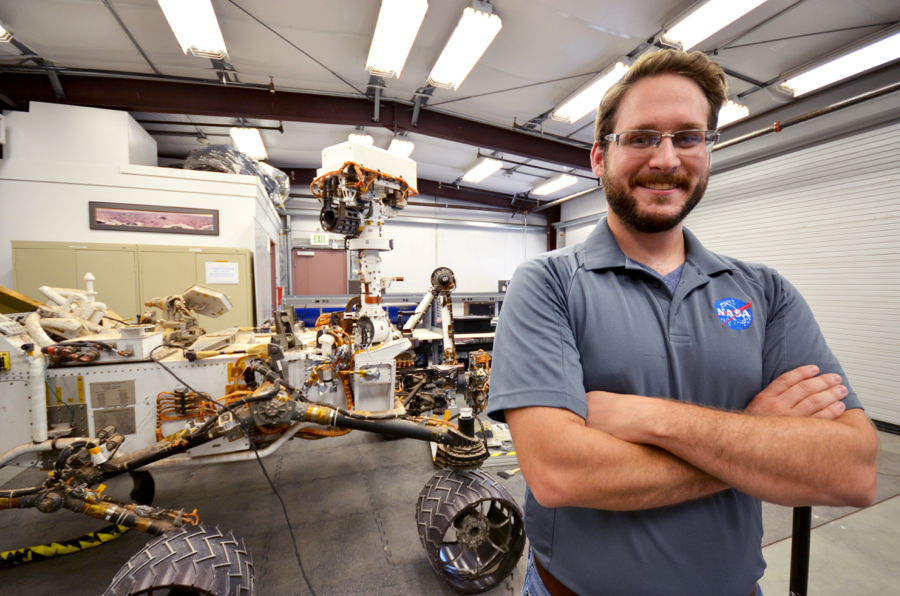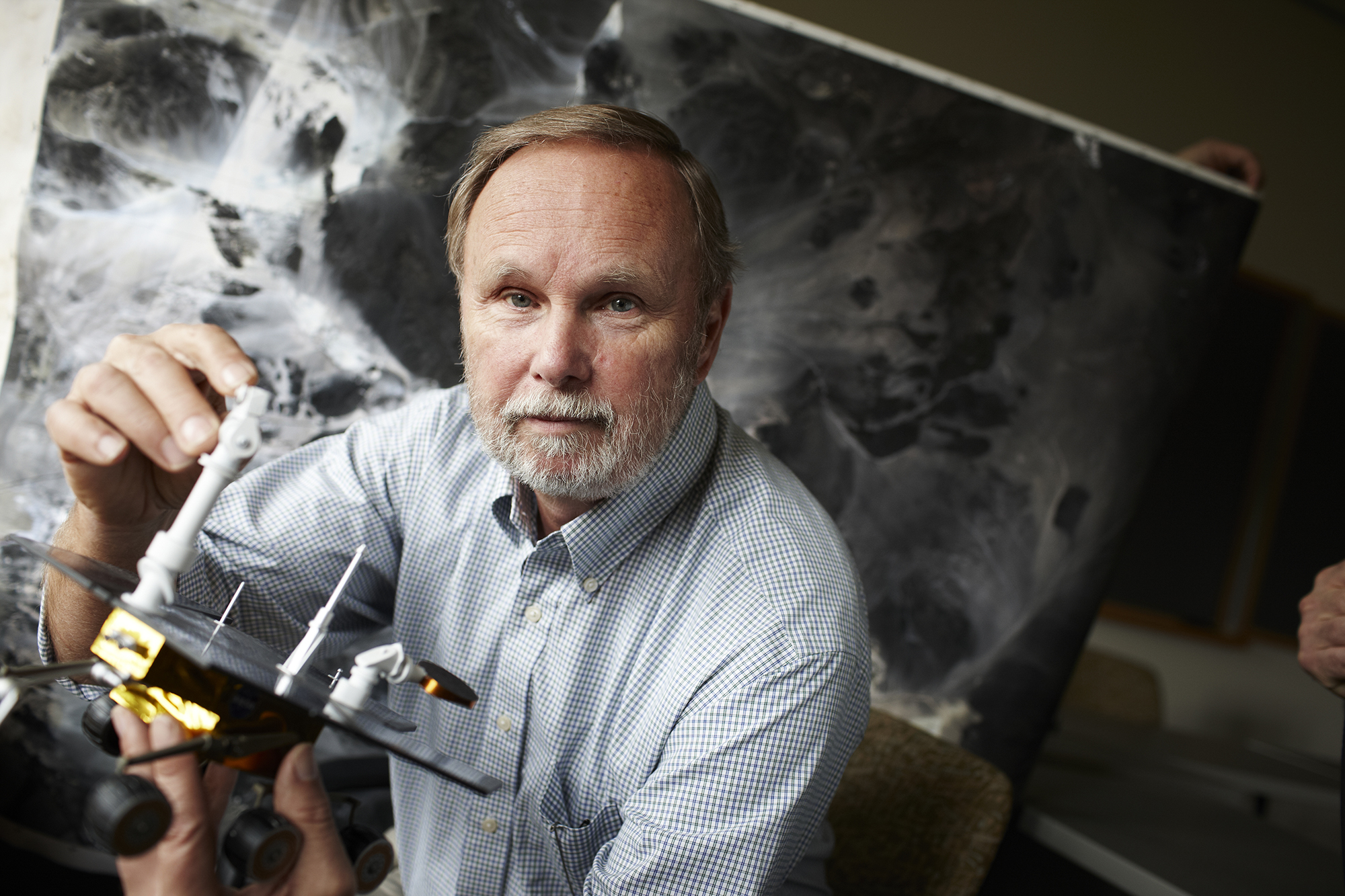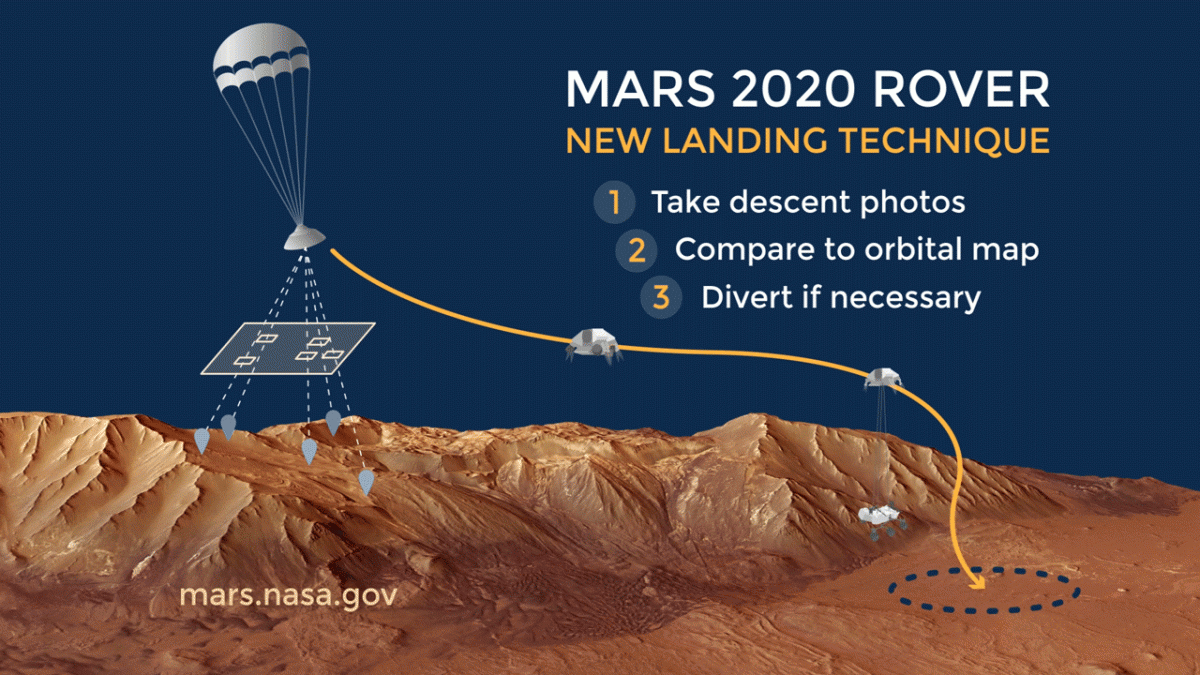Earth and planetary sciences researchers played key roles in the debate over where NASA's next Mars rover should land.
Last October, planetary scientists gathered in Glendale, CA, to debate the next chapter of Mars exploration. Michael Bouchard, a PhD candidate in Earth and planetary sciences and NASA Earth and Space Science Fellow, participated in these lively discussions about where on the Red Planet to land the next rover, which is scheduled to launch in 2020. When the scientists reached a decision, Jezero Crater, an ancient 49 km-wide lake bed on the west side of Isidius Planitia, beat out three competitors. The rover, known as Mars 2020, will collect 37 to 42 rock samples and store them on the Martian surface for future retrieval by another mission.
Bouchard and the other scientists weighed in on specific criteria associated with the potential scientific returns of each site, such as landing feasibility, availability of interesting rocks nearby, and value of an extended mission. Jezero was consistently well rated across all criteria, solidifying its future as the focal point of planetary surface exploration for the next decade and beyond.

Many different scientific perspectives were at play in these meetings, Bouchard explained, resulting in tight competition among the final four sites. As someone with a background in both engineering and science, Bouchard understands the continuous compromise needed among ambitious researchers and pragmatic engineers. He has helped develop protocols to test the functionality of the many interfaces between the rover’s moving parts for the NASA/Caltech Jet Propulsion Lab and has worked on various spacecraft instruments. He currently develops statistical models to systematically study Martian geochemistry.
Ray Arvidson, James S. McDonnell Distinguished Professor in Earth and Planetary Sciences, also participated in the conferences, contributing insights on mineral composition, rover mobility issues, and other aspects of the mission’s overall science. Arvidson’s extensive involvement in Martian planetary science stretches over 40 years, including numerous leadership roles for missions such as Spirit, Opportunity, and, currently, Curiosity.

“I liked Jezero Crater from the start because of the well-understood geologic and stratigraphic context associated with the exposed deltaic complex,” said Arvidson, emphasizing the extensive research that has been done on the crater’s evolution from an ancient lake with rivers flowing in from all sides to a relatively smooth crater with geologically diverse terrain. The rivers that once flowed into this lake carried their own unique set of minerals that were deposited at different times billions of years ago, when water was likely present on the Martian surface. This mineralogical diversity increases the chances of finding evidence for past or present microbial life, and the returned samples should give future researchers a rich dataset to study.
The rover is set to launch in either July or August 2020, when Earth and Mars are in favorable positions relative to each other. Scientists will also study mission logistics such as landing techniques, oxygen production, and weather characterization to better understand how to transport humans to the Red Planet in future, as-yet-unplanned missions. Bouchard notes that the rover’s design is similar to the tried-and-true Curiosity rover, with newer software seeking to minimize the risks associated with landing and the amount of time spent en route to Mars.
One new technology, Terrain Relative Navigation, allows the rover to land closer to its target than ever before. Upon descent, the spacecraft will compare an onboard dataset of the terrain from satellites with its own calculated position and automatically change direction if needed to home in on the safest landing site as close as possible to the desired spot. This, combined with other technologies, could shave off as much as a year of mission time, according to Bouchard and other scientists.

Now, with a holistic view of the rover’s potential, Bouchard is optimistic for a successful mission but also aware of the immense challenges ahead, especially as they relate to eventually putting humans on the planet. “It will be the most technologically challenging thing humanity has ever done,” he notes. “There are two extremes: the risk-averse people who say we should hold off and the ambitious ones who say we must send humans now. But as with most things, I think there will be a middle ground.”
For now, the “holy grail” for planetary scientists is returning rock samples to Earth, and Mars 2020 is better equipped to do this than any other mission to date. Researchers will still process the data from previous Martian missions, but the overall focus in the scientific community will turn to Jezero Crater. The returned samples will be the object of intense scrutiny, but the potential for human exploration will always remain in the back of researchers’ minds. “Mars is a focus for NASA’s exploration, especially with humans,” said Arvidson, so the results of these landing site conferences have implications extending far into the future.




